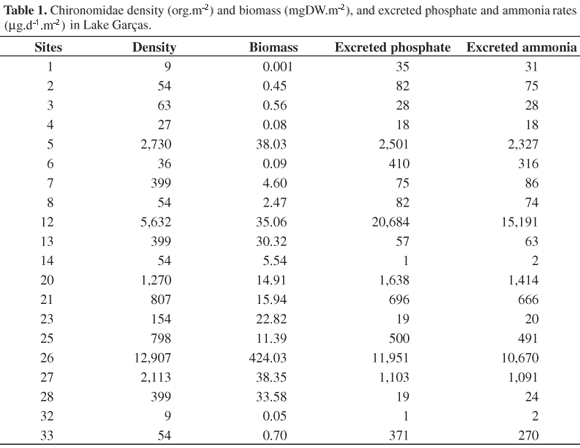Measurements of ammonium and phosphate excretion by the Chironomus larvae were conducted in order to evaluate the importance of these chironomids for the internal loads of a small eutrophic urban reservoir. Ammonium and phosphate excretion rates by Chironomus larvae of small size (6-10 mm total length) were significantly higher than those of the Chironomids having medium (9-11 mm) and large (11-16 mm) sizes. A dependence in relation to temperature was recorded for the ammonium and phosphate excretions that was significantly higher at 25 °C than at 20 and 15 °C. Through a linear relation between biomass (dry weight) and total length and, between excretion and biomass and, data on chironomids densities, after an intense sampling in 33 sites distributed all along the reservoir bottom, the mean phosphate and ammonium excretion rates corresponded to 2,014 ± 5,134 µg.m-2/day and 1,643 ± 3,974 µg.m-2/day, respectively. Considering the mean biomass (34 mg.m-2) of Chironomus, the lake area (88,156 m²) and the mean excretion rates, the contribution of benthic chironomids to the internal loads would be 181 KgP and 147 KgN. for the sampling months (October-November 1998). These values showed that the internal loads by excretion from Chironomus larvae correspond to approximately 33% of the external loads of phosphorus in the lake and, in the case of nitrogen, to only 5%.
excretion; Chironomus; internal load; reservoir; nutrients







